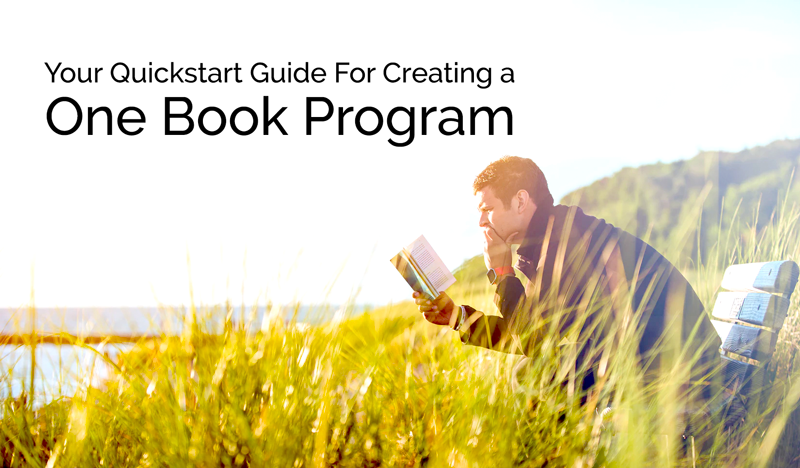
Posted by Megan Habel on Oct 11, 2017
Your Quickstart Guide For Creating a One Book Program
Communities all over the country are starting One Book programs in hopes of connecting people to literature through reading and discussion. As hundreds of programs are popping up at city, county, state, and national levels, it is important to understand what this program is.
Below we provide a quick look at One Book programs and how you can start one of your own!
What is a One Book Program?
In 1998, Nancy Pearl initiated the first city-wide book program. She invited her fellow Seattle community members to read The Sweet Hereafter and brought in author Russell Banks to discuss the book.
The popularity of large-scale book programs continued and in 2003, the American Library Association (ALA) began providing librarians with guidance and information on planning One Book programs. In 2005, the National Endowment for the Arts (NEA) started "The Big Read" with the intention of revitalizing the the role of literature in American pop culture. Now, people across the United States are involved in their own community's One Book program.
How to Start a One Book Program:
Want to start a One Book program in your community, school, or organization? Here we provide eight steps toward creating a successful event:
1. Identify Goals
As with any initiative, identifying and setting goals is of utmost importance. With this, you will be able to get your team on the same page as well as convey to the public your vision for the event.
2. Create a Timeline
Plan in advance! The more intensive your event, the more you will need to plan ahead to get tasks done. Having a concrete plan will also help efficiency and keep your team on track.
3. Find Partnerships
An event for the whole community requires the assistance from the whole community. Whether it be financial sponsorships, supply donations, marketing efforts, or volunteer support, partnerships are essential to a successful program.
4. Build a Budget
Once you have set goals, established a timeline, and found partnerships, it is time to configure a budget. Make sure to consider donations of goods and services in your calculations. From here, you will be able to figure out how much money you will need to raise.
5. Select a Book
Now for the most important part - the book! Refer to your goals when deciding which book to feature. Do you want a book written by a local author? A children's book? What do you want the participants to take away? Additionally, if you want the author to be a part of the event, you will need to confirm their availability and plan out the applicable details.
6. Develop the Program
Aside from reading the book, what sorts of events do you want to hold in order to engage the community? These can include book discussion sessions, lectures, author interviews, film screenings, and more.
7. Craft a Reading and Discussion Guide
A great way to engage the community is to create materials to supplement the reading of the assigned book. Consider including elements such as a summary of the project, calendar of events, an overview of the book and author, discussion questions, related sources, and other related materials.
8. Market and Promote Your Event
Time to get people excited! Spread the word of your One Book program and related events with flyers, press releases, social media posts, and emails.
The American Library Association is a great resource for more ideas regarding community-wide reading programs. Can't decide which titles to include in your One Book program? Browse BookPal's extensive catalog of discounted wholesale titles that are perfect for your reading program — or even better, give us a call!
This post was written by Megan Habel, the marketing associate at BookPal. She is currently reading Radical Candor by Kim Scott.





